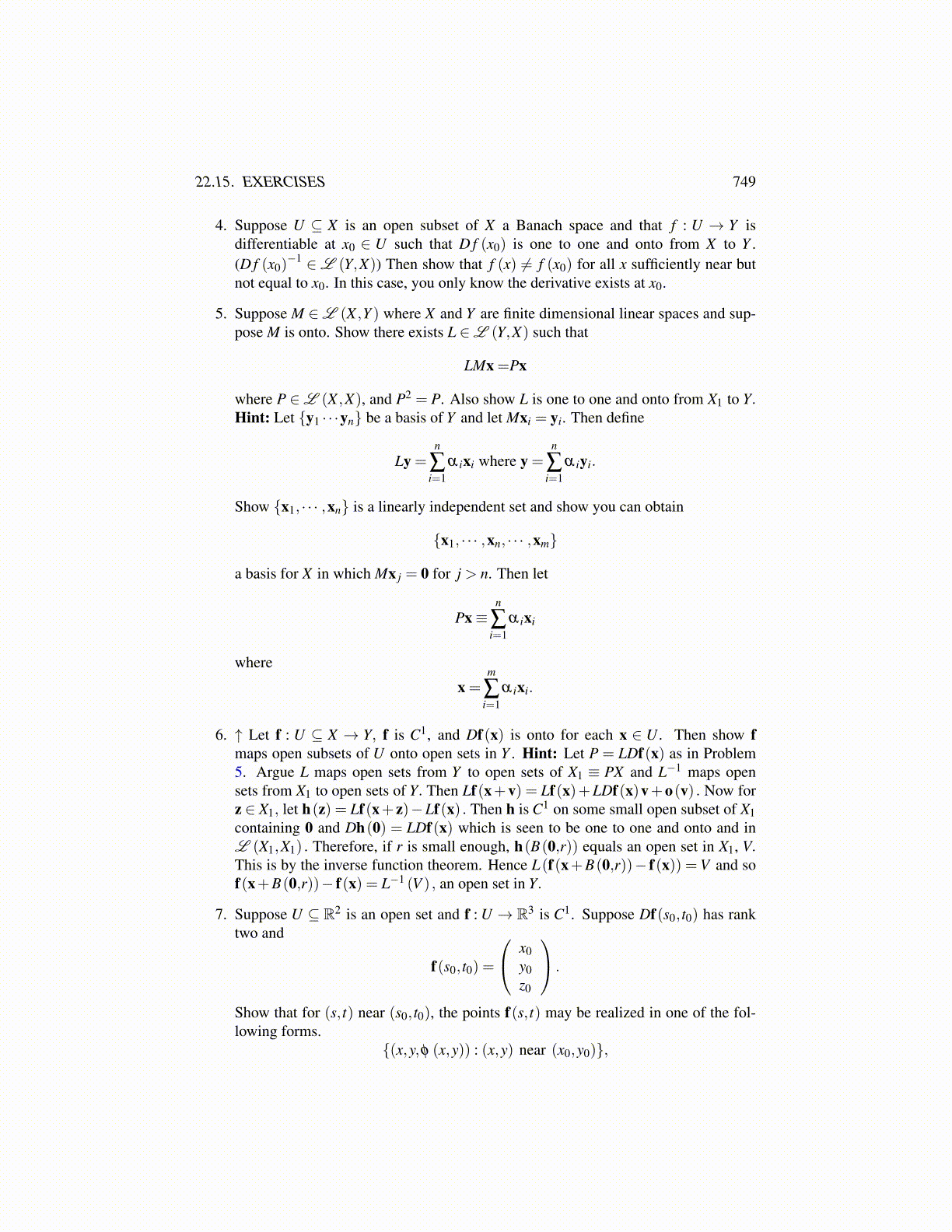
22.15. EXERCISES 749
4. Suppose U ⊆ X is an open subset of X a Banach space and that f : U → Y isdifferentiable at x0 ∈ U such that D f (x0) is one to one and onto from X to Y .(D f (x0)
−1 ∈L (Y,X)) Then show that f (x) ̸= f (x0) for all x sufficiently near butnot equal to x0. In this case, you only know the derivative exists at x0.
5. Suppose M ∈L (X ,Y ) where X and Y are finite dimensional linear spaces and sup-pose M is onto. Show there exists L ∈L (Y,X) such that
LMx =Px
where P ∈L (X ,X), and P2 = P. Also show L is one to one and onto from X1 to Y.Hint: Let {y1 · · ·yn} be a basis of Y and let Mxi = yi. Then define
Ly =n
∑i=1
α ixi where y =n
∑i=1
α iyi.
Show {x1, · · · ,xn} is a linearly independent set and show you can obtain
{x1, · · · ,xn, · · · ,xm}
a basis for X in which Mx j = 0 for j > n. Then let
Px≡n
∑i=1
α ixi
where
x =m
∑i=1
α ixi.
6. ↑ Let f : U ⊆ X → Y, f is C1, and Df(x) is onto for each x ∈ U . Then show fmaps open subsets of U onto open sets in Y . Hint: Let P = LDf(x) as in Problem5. Argue L maps open sets from Y to open sets of X1 ≡ PX and L−1 maps opensets from X1 to open sets of Y. Then Lf(x+v) = Lf(x)+LDf(x)v+o(v) . Now forz ∈ X1, let h(z) = Lf(x+ z)−Lf(x) . Then h is C1 on some small open subset of X1containing 0 and Dh(0) = LDf(x) which is seen to be one to one and onto and inL (X1,X1) . Therefore, if r is small enough, h(B(0,r)) equals an open set in X1, V.This is by the inverse function theorem. Hence L(f(x+B(0,r))− f(x)) =V and sof(x+B(0,r))− f(x) = L−1 (V ) , an open set in Y.
7. Suppose U ⊆ R2 is an open set and f : U → R3 is C1. Suppose Df(s0, t0) has ranktwo and
f(s0, t0) =
x0y0z0
.
Show that for (s, t) near (s0, t0), the points f(s, t) may be realized in one of the fol-lowing forms.
{(x,y,φ (x,y)) : (x,y) near (x0,y0)},